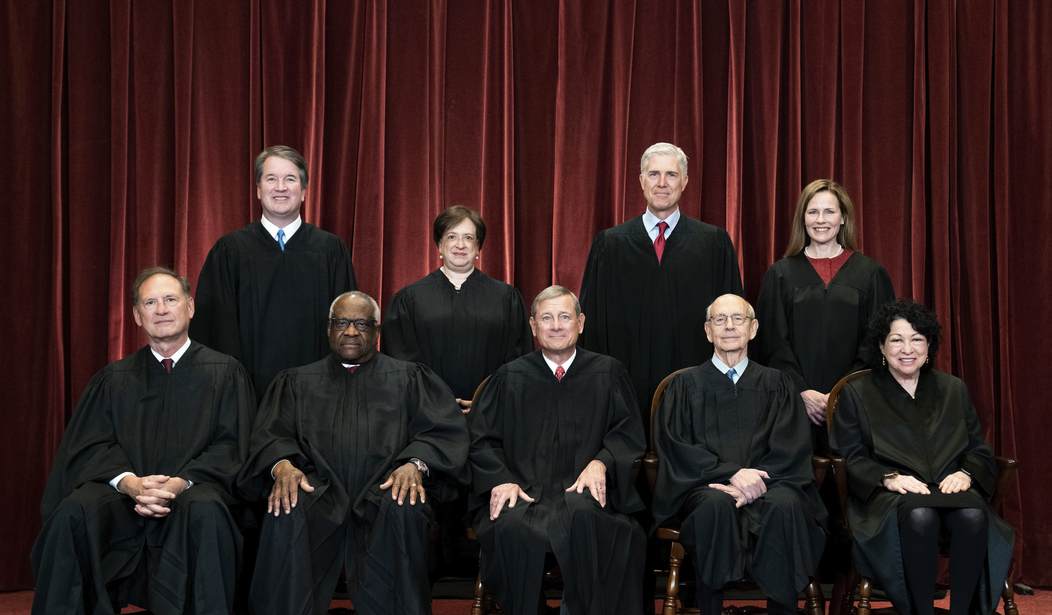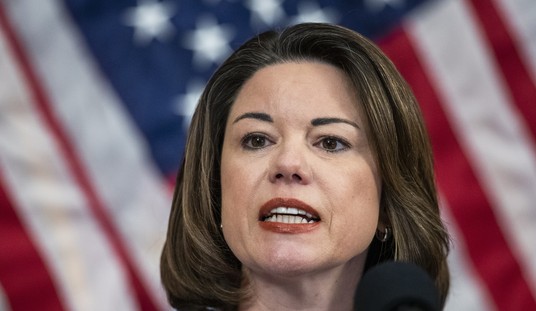On Monday, the US Supreme Court removed an injunction imposed upon Alabama by a panel of three federal judges that would have prevented Alabama from finalizing its congressional district map and thrown the 2022 elections in Alabama into chaos (see The Supreme Court Drops the Hammer on Democrat Redistricting Games and Sets up a Coming Death Blow). The case came to the court by way of an appeal (Alabama Appeals the Rejection of Its Redistricting Map and the Left May Get More Than It Wanted or Expected) after the Alabama map that has been used since 1990 was challenged by progressive activists who decided that they could use the courts to force Alabama to create an additional “minority-majority” district. The issue in these cases is never about racial representation. Instead, it is about creating Democrat House seats.
In my original post, I noted that some leftist legal writers, particularly the very excitable Ian Milhiser at Vox.com, were predicting that the current Supreme Court would use the Alabama case as a pretext for pulling out by the roots the last vestiges of the racial spoils system that has been baked into our redistricting laws.
The lower court ordered the state legislature to redraw the map, relying on a provision of the Voting Rights Act banning racial gerrymanders. To reach that decision, the three judges spent 225 pages walking through the exceedingly complicated test announced in Thornburg v. Gingles (1986), which asks whether a state election law that imposes a disproportionate burden on racial minorities “interacts with social and historical conditions to cause an inequality in the opportunities enjoyed by [minority] and white voters to elect their preferred representatives.”
As I’ve written, the legal rule that the Court announced in Gingles — which governs many redistricting cases filed under the Voting Rights Act — is a mess. It advises courts to weigh at least nine different factors. And it would be reasonable for a state to ask the Supreme Court to come up with something less unwieldy to help lower courts sort through these sorts of cases. Alabama could have gone this route, and if it had proposed a reasonable modification to the Gingles test, it’s possible that such a modification could have helped them defend their maps.
But Alabama does nothing of the sort in the Merrill case. Instead, it proposes a new rule that, if adopted by the Supreme Court, could effectively make it impossible to challenge a racial gerrymander in federal court.
At one point, for example, Alabama quotes favorably from a 1994 opinion by Justice Clarence Thomas, which was joined only by one other justice, and which suggests that no voting rights violation occurs even if a state gerrymanders its districts to make it impossible for racial minorities to elect their preferred candidate. Under this theory, “minorities unable to control elected posts would not be considered essentially without a vote; rather, a vote duly cast and counted would be deemed just as ‘effective’ as any other.”
The state’s primary argument, meanwhile, would trap voting rights plaintiffs in a kind of Catch-22.
The Monday decision by the Supreme Court convinces me that Milhiser was correct in his fear. The five votes to lift an injunction without hearing the case on its merits effectively approved Alabama’s new map for 2022 while keeping the macro issue of racial gerrymandering alive.
Merrill vs Milligan by streiff at redstate
Rick Hasen, writing at Election Law Blog, seemed glum. He is concerned about two main issues. He sees the current Supreme Court drawing a very bright line on what is called the Purcell Principle. The Purcell Principle, which comes from the 2006 case of Purcell vs. Gonzalez, says that courts should refrain from last-minute mucking about in state election laws and procedures to avoid confusing voters and voting officials. Of course, as we saw in 2020, to carry out industrial-scale election fraud, you need willing accomplices in the judiciary who can keep the rules in flux. If the rules are locked in place, fraud becomes exponentially more difficult. I suspect having the brakes put on fraud is actually more of a concern to the progressive left than any concern about fairness.
His real fear is Chief Justice John Roberts. Roberts caught a lot of crap from the right over voting “with the liberals” to keep the injunction. The problem is that Roberts voted to strike the proposed Alabama map, but his reason for doing so had nothing to do with agreeing with the factual basis of the three-judge panel. Chief Justice Roberts’ dissent is reproduced below.
But while the District Court cannot be faulted for its application of Gingles, it is fair to say that Gingles and its progeny have engendered considerable disagreement and uncertainty regarding the nature and contours of a vote dilution claim. See Gingles, 478 U. S., at 97 (O’Connor, J., concurring in judgment) (characterizing the Court’s ap-proach at the outset as “inconsistent with . . . §2’s disclaimer of a right to proportional representation”); Johnson v. De Grandy, 512 U. S. 997, 1028 (1994) (Kennedy, J., concurring in part and concurring in judgment) (warning that “placing undue emphasis upon proportionality risks defeat-ing the goals underlying the Voting Rights Act”); Gonzalez v. Aurora, 535 F. 3d 594, 597 (CA7 2008) (Easterbrook, J.) (referring to section 2’s “famously elliptical” language). See also J. Chen & N. Stephanopoulos, The Race-Blind Future of Voting Rights, 130 Yale L. J. 862, 871 (2021) (describing section 2 vote dilution doctrine as “an area of law notorious for its many unsolved puzzles”); C. Elmendorf, Making Sense of Section 2: Of Biased Votes, Unconstitutional Elections, and Common Law Statutes, 160 U. Pa. L. Rev. 377, 389 (2012) (noting the lack of any “authoritative resolution of the basic questions one would need to answer to make sense of the results test”).
In order to resolve the wide range of uncertainties arising under Gingles, I would note probable jurisdiction in Milligan and grant certiorari before judgment in Caster, setting the cases for argument next Term. But I would not grant a stay. As noted, the analysis below seems correct as Gingles is presently applied, and in my view the District Court’s analysis should therefore control the upcoming election. The practical effect of this approach would be that the 2022 election would take place in accord with the judgment of the District Court, but subsequent elections would be governed by this Court’s decision on review.
Roberts is obviously unhappy with the current state of redistricting law and doesn’t seem to think it is workable. His objective is to revise the current standard in Gingles so that it is manageable and consistent. As I noted in my original post, given Roberts’ well-established history of hostility to racial quotas, this does not bode well for the current legal regime for redistricting. Making the rules consistent and straightforward also cuts against the current state of affairs.
In the view of Hasen:
He reasoned that a stay was not warranted because the lower court fully followed existing law on how to apply the VRA to redistricting. But he said the law is a mess and the case should be set to reconsider the law. Put Roberts together with the 5 other conservative Justices in the majority that voted to both grant the stay and to hear the cases and there could be six votes that would read the VRA in redistricting in a horrible “race blind” way that Nick explained here and that Justice Kagan discussed today in her dissent. This could be a radical reworking of the VRA that would decrease minority representation, especially in the south.
Hasen’s sentiment is echoed by s Washington Post op-ed by Nick Stephanopoulos.
Nevertheless, the court’s conservative majority might be poised to rewrite Section 2 in the way that Alabama proposes. Justice Brett M. Kavanaugh, in a concurrence joined by Justice Samuel A. Alito Jr., said that the outcome of the case was not “clearcut” in favor of those challenging Alabama’s map. That can only be true if the court is preparing to transform the law.
Again, the left seems to have overplayed its hand. By pursuing a strategy of attacking a 30-year-old map on spurious grounds for a minor political gain, the plaintiffs in Merrill gave a conservative Supreme Court two large, fat, slow-moving targets; those would be the last minute meddling in state elections by federal judges and the use of race as a major criterion in drawing congressional boundaries. It is probably not going to work out well for them.













Join the conversation as a VIP Member